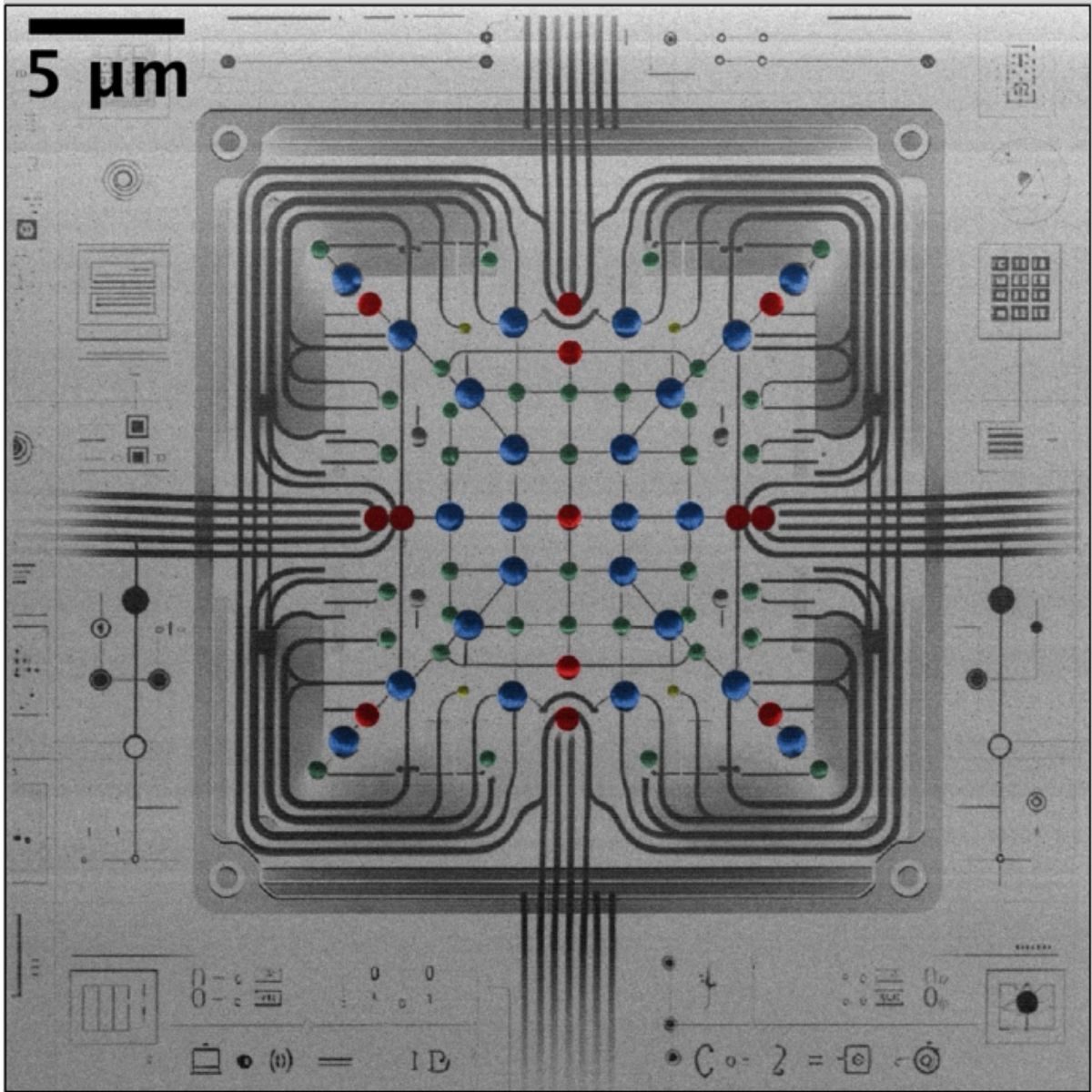Reviewed by Lexie CornerMay 7 2024
The University of Surrey is celebrating a breakthrough in atomic-scale X-Ray imaging, which detects the presence of just a few hundred gallium atoms inside an otherwise pure silicon crystal.
 This microscope image of tiny atomic-scale implanted structures in a silicon chip illustrates the quantum device design capability. Different implants are illustrated with false colors. The smallest features in the image have a resolution of around 30 nanometers, about 1000 times smaller than a human hair, and similar in size to the smallest features used in the X-Ray study. Image Credit: University of Surrey
This microscope image of tiny atomic-scale implanted structures in a silicon chip illustrates the quantum device design capability. Different implants are illustrated with false colors. The smallest features in the image have a resolution of around 30 nanometers, about 1000 times smaller than a human hair, and similar in size to the smallest features used in the X-Ray study. Image Credit: University of Surrey
Spotting such tiny impurities could help build more efficient and powerful quantum computers.
Now, the team predicts that X-Ray imaging will detect a single atom inside a solid sample within the next year or so.
Dr. Mateus Masteghin, who led the study at the University of Surrey, said:
"It has long been possible to image single atoms on surfaces or in very thin membranes. Yet, our findings showed we can approach single-atom sensitivity when the impurities are hidden inside a thick sample.
“It’s like combining the capabilities of the Marvel characters Ant-Man and Superman to see-through materials to the tiniest structures. This gives us a new tool for engineering the ultimate in nanotechnology devices, atom by atom."
In a regular chest X-Ray, heavier and lighter elements show up differently. This allows us to see metal screws or bones. Density alters the contrast, which is how we can pick out air-filled lungs.
The Surrey scientists wondered how small a density the X-Ray could detect.
They developed an experiment with colleagues at DESY (Germany), UCL, and Madison-Wisconsin to find out. They used the X-Ray facilities at the National Synchotron Light Source II at Brookhaven National Laboratory (USA).
At Surrey’s Ion Beam Centre, they implanted just 350 zeptogrammes of gallium atoms in an otherwise pure silicon crystal. That’s about a million billion times less than the mass of an ant or about a billion times less than that of a single cell.
Remarkably, the X-Rays were sensitive enough to find the tiny cluster of gallium atoms.
Professor Ben Murdin, head of the Photonics and Quantum Sciences Group at the University of Surrey, said:
"Far from being unwanted, crystal impurities are crucial for the function of all kinds of technology from lasers to computer chips.
“This level of detail in impurity detection is critical for advancing quantum computing and could lead to more efficient and powerful quantum devices.
“At the same time, trace element detection with this level of precision could lead to exciting new opportunities in chemistry, biology, and medicine.”
Dr. Yong Chu, Manager for the Imaging and Microscopy Program at NSLS-II, said:
“To detect such a tiny impurity deep within a silicon crystal has many exciting possibilities.
“We’re excited to see how much further we can push the detection limit of X-Ray microscopes.
“It’s possible that they will be able to detect a single atom using this technique within the near future.”
The study is published in the journal Small Methods.